Sunday, August 10, 2025
Wow! Today turned out to be a remarkable day—one where the journey was just as adventurous as the destination itself.
The day began on a rough note: it had poured all night, and the sky was still heavy with rain. Despite the gloom, we woke early, groggily prepped our gear, and made our way down the slick boardwalk to the dining room. There, we met up with German and John for a quick, pre-ordered breakfast (and much-needed coffee) that we had selected the night before.
Before long, we were descending toward the river and boarding our speedboat for a brisk 15-minute ride down the Amazon to the town of Indiana, population roughly 6,000. One of the town’s influential residents had studied at a university in Indiana, USA, and chose to name the settlement after that state. We disembarked and climbed the riverbank, crossing a small bridge, passing a fish farm pond, and walking by the tower that purifies Amazon water for the area’s use. We followed a boardwalk toward the town’s main business area.
—— Disembarking in Indiana ——
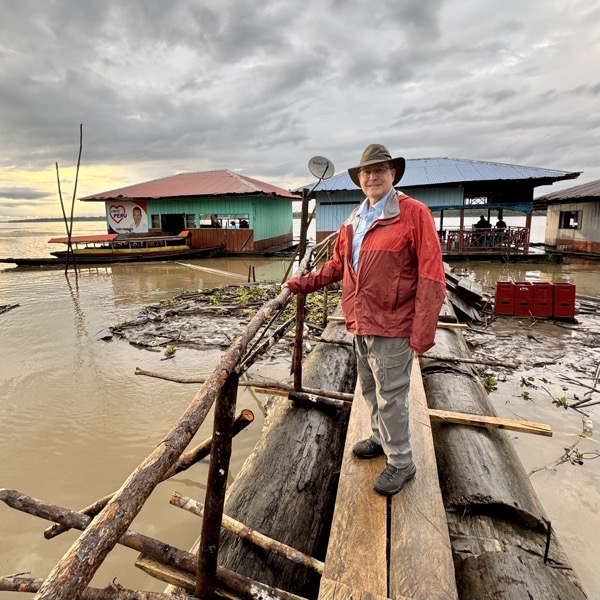
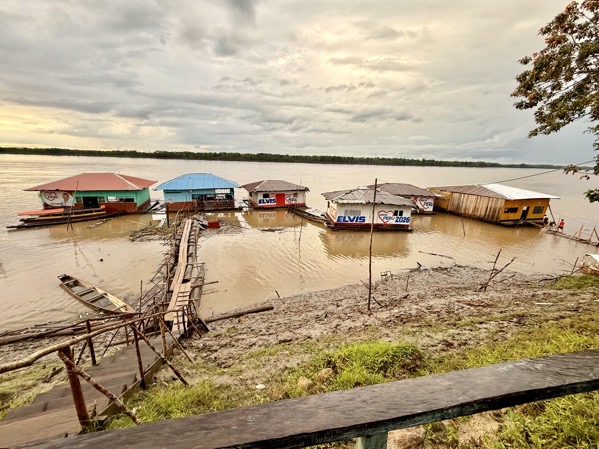
We walked through the town’s main plaza featuring striking arches to the fish market, the Mercado de Indiana, dominating the town’s main business area. Inside, we found a surprisingly modern facility, with clean, stainless steel bins displaying a wide variety of Amazonian fish species—far more sophisticated than one might expect in such a remote rainforest town. It had been completed in December 2024. German guided us through the market, expertly identifying the different fish and sharing their local names and uses.
—— Indiana Plaza and Market ——
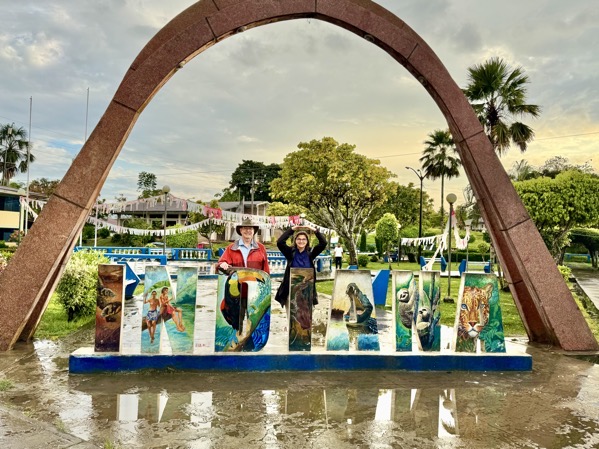
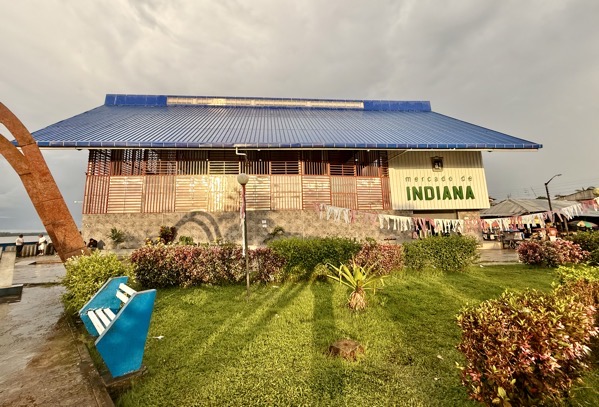
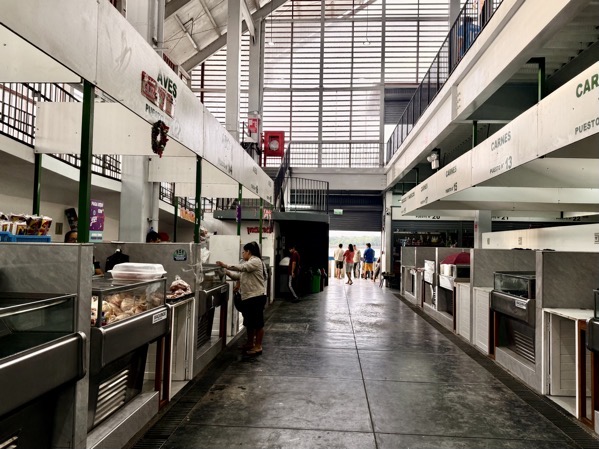
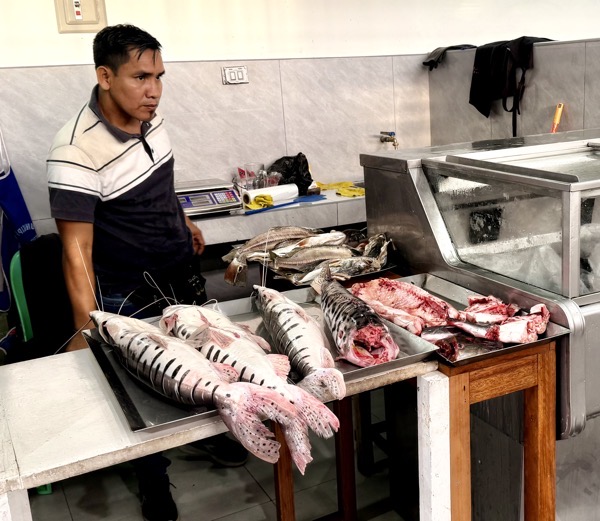
German led us through town to a roadside where a row of tuk-tuks waited, engines buzzing softly. Along the way, we passed numerous political slogans painted across buildings—amusingly, many claimed that Elvis was alive and running for office in this corner of the Amazon. Jane and I were introduced to our driver, Vidal, and climbed into the back seat of his tuk-tuk, while German and John boarded another just behind us.
—— Tuk-tuk Embarkation ——
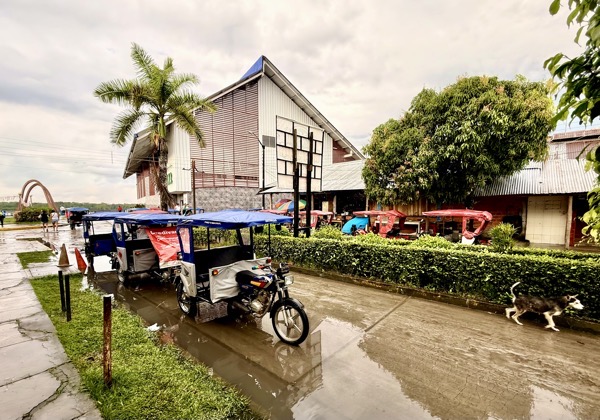
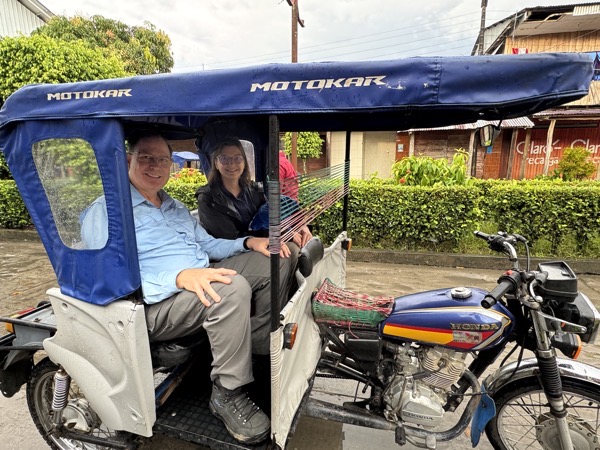
What followed was an unforgettable three-mile ride through rainforest terrain, offering glimpses of local life, modest homes, and roadside activity. The narrow two-lane road was rough—one lane mostly paved, the other often made up of jagged, broken pavement. Drivers shared the smoother lane and yielded when encountering oncoming traffic, swerving onto the rockier shoulder as needed before returning to the better path. It made for a bumpy, jostling, zigzagging journey—but an exhilarating one.
—— Tuk-tuking from Indiana to Mazán ——
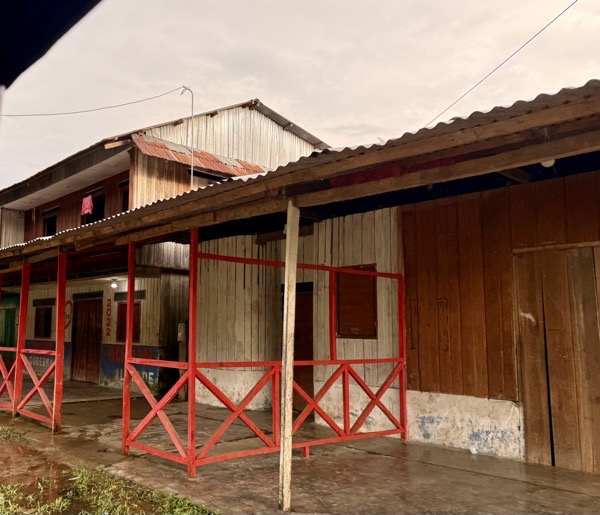
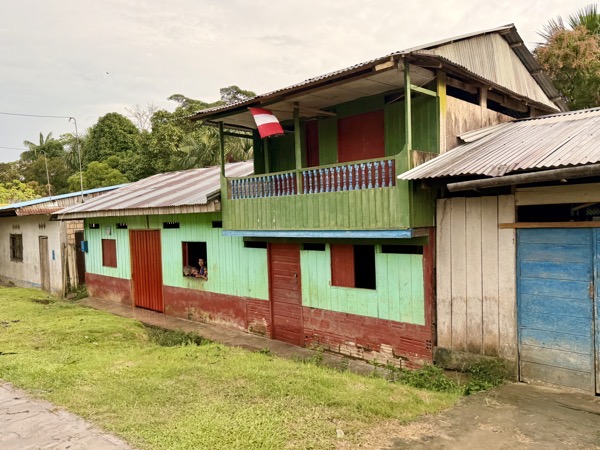
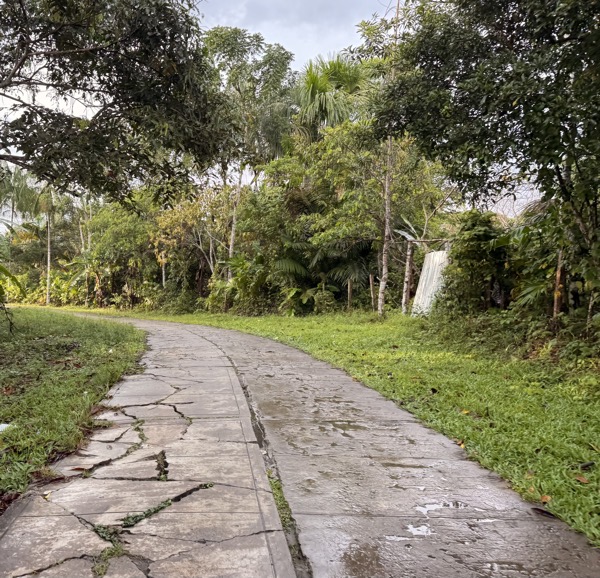
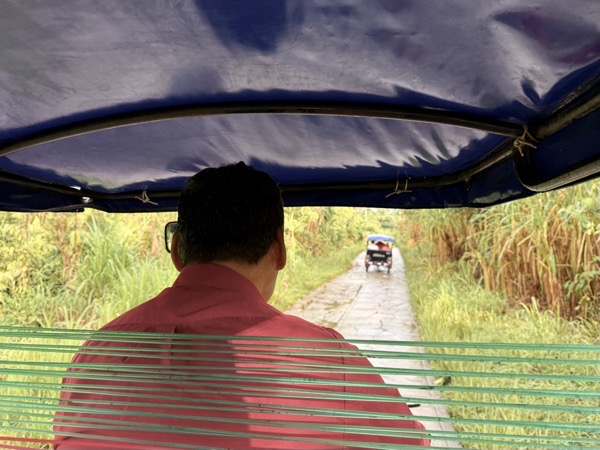
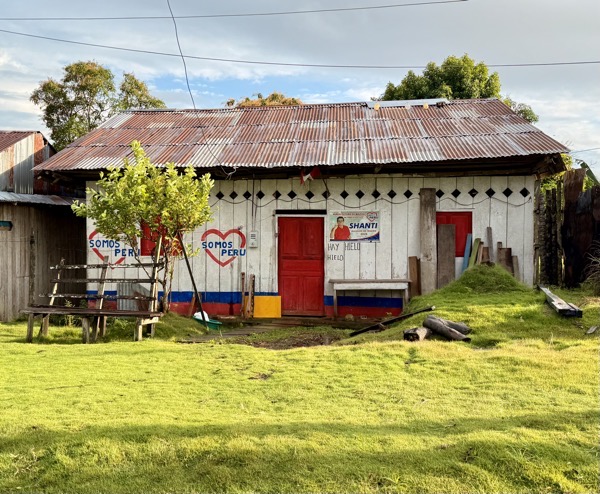
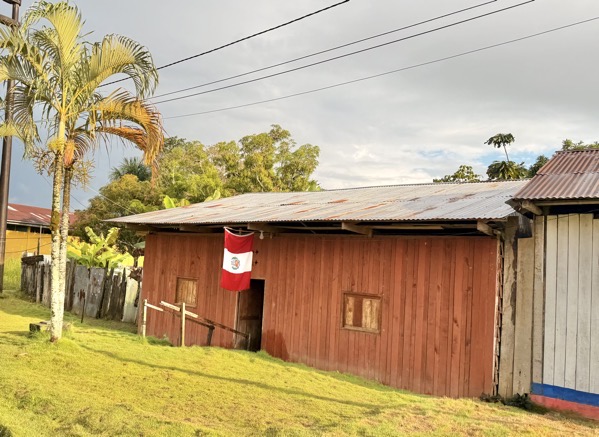
Our ride ended in Mazán, a small riverside settlement on the Rio Napo, where we boarded a covered boat for a scenic 50-minute journey to the Explorama ExplorNapo Lodge. Upon arrival, we disembarked, climbed a short set of steps, and followed a wooden boardwalk to the lodge—where we were greeted by Charlie, a young capybara who has become something of a local mascot. According to staff, Charlie likely lost his mother and took up residence near the lodge, becoming quite friendly with visitors.
—— Cruising the Rio Napo ——
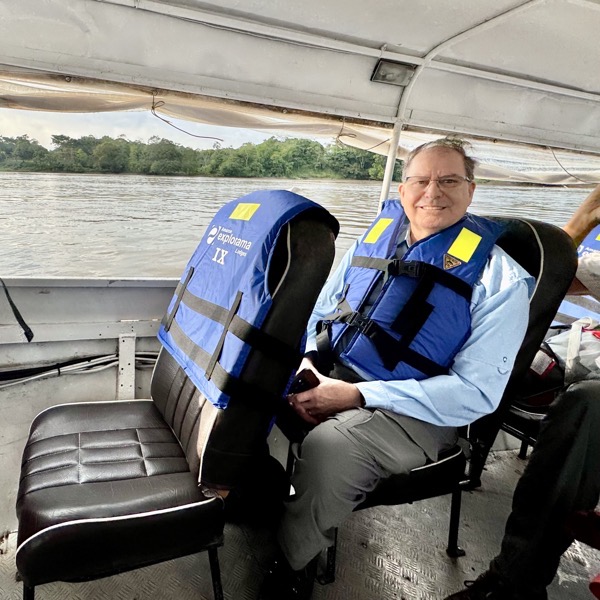

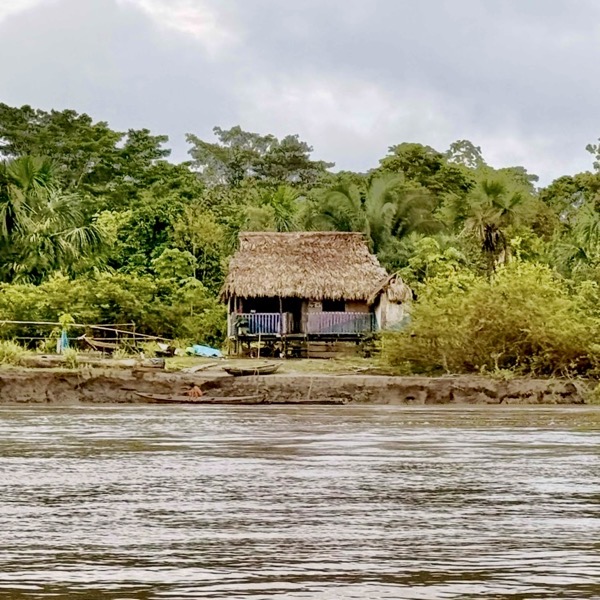
—— Explorama ExplorNapo Lodge ——
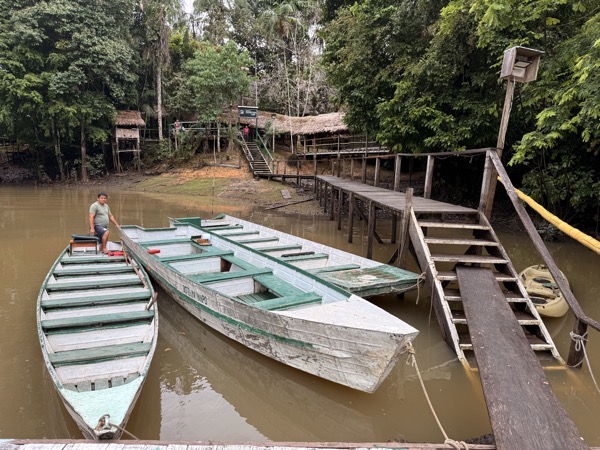 Docking
Docking
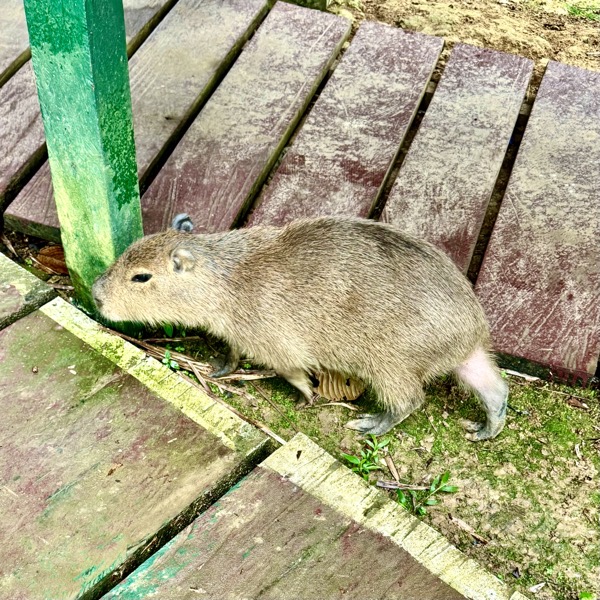 Our Capybara Host, Charlie
Our Capybara Host, Charlie
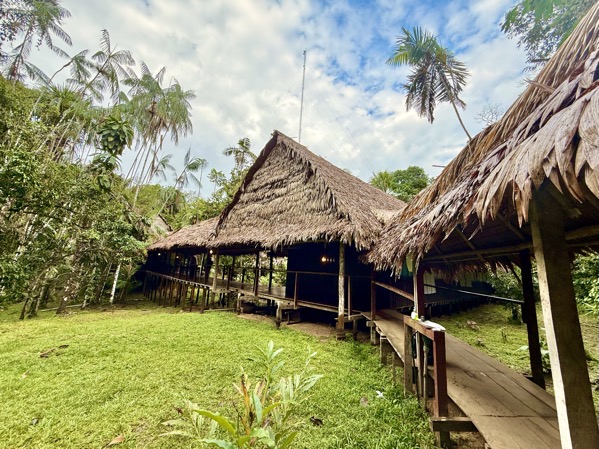 ExplorNapo Lodge, Exterior
ExplorNapo Lodge, Exterior
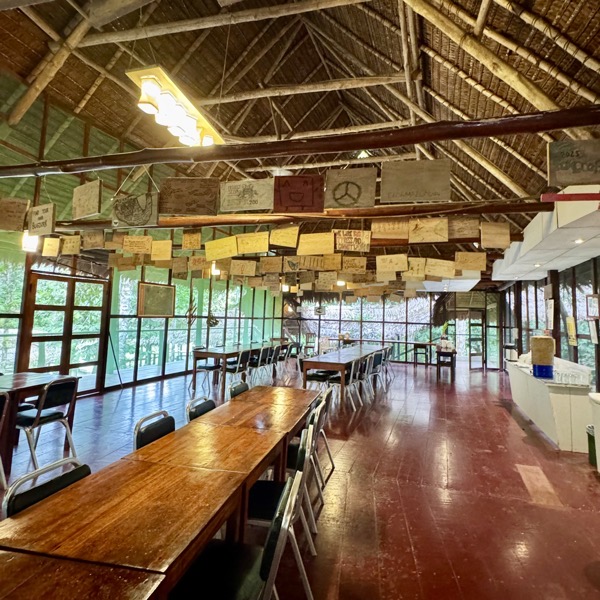 ExplorNapo Lodge, Interior
ExplorNapo Lodge, Interior
After a quick bathroom break, we set off on a short hike and then boarded an open narrow boat to navigate a tight tributary of the Rio Napo. The waterway was winding, with many sharp turns requiring careful steering. At the front sat Katharin, a local woman who helped guide the way, while the motor operator at the back did the heavy work of maneuvering us through. Fortunately, the water level was high enough for navigation—otherwise, we would have been in for a long slog through dense wet rainforest on foot.
—— Boating up the Rio Napo Tributary ——
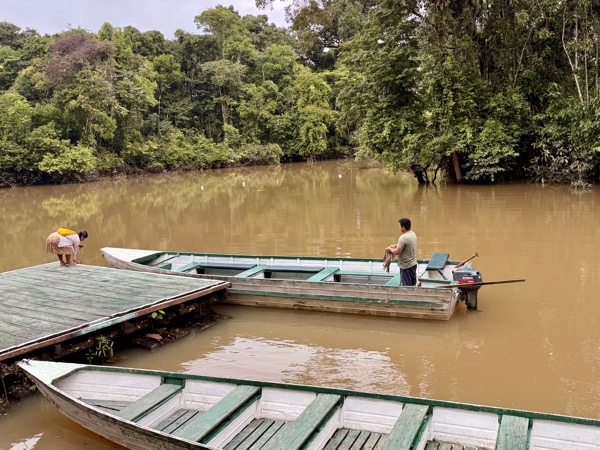
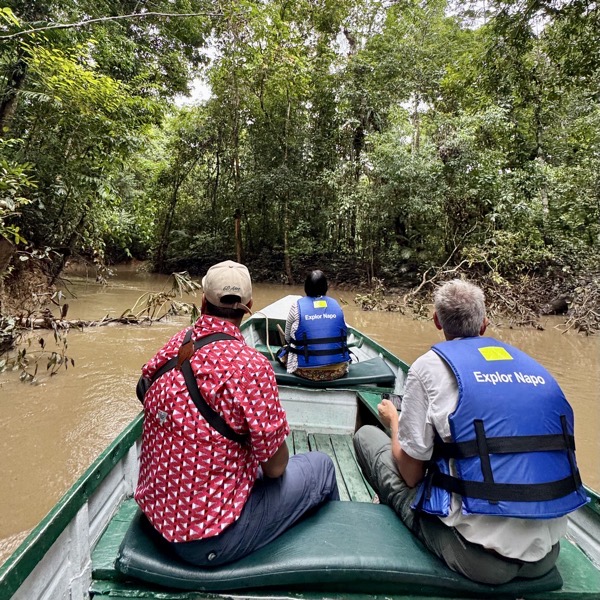
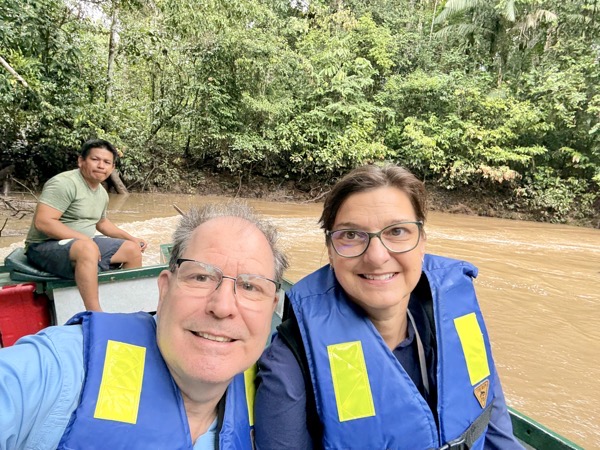
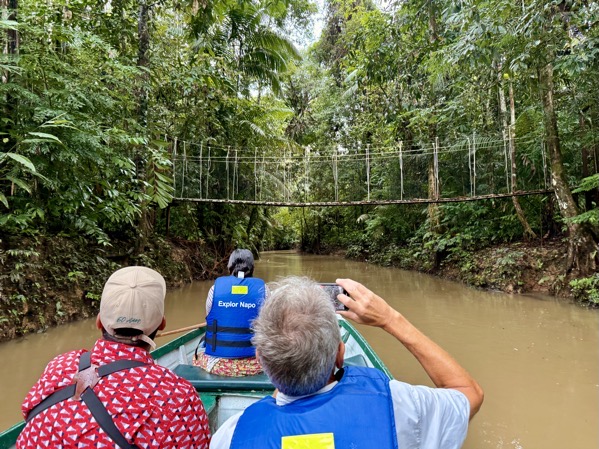
At last, we reached a muddy riverbank with a set of stairs leading upward. Just beyond was our destination: the ACTS (Amazon Conservatory for Tropical Studies), with its elevated walkway only a 20-minute hike away.
—— Arriving at ACTS ——
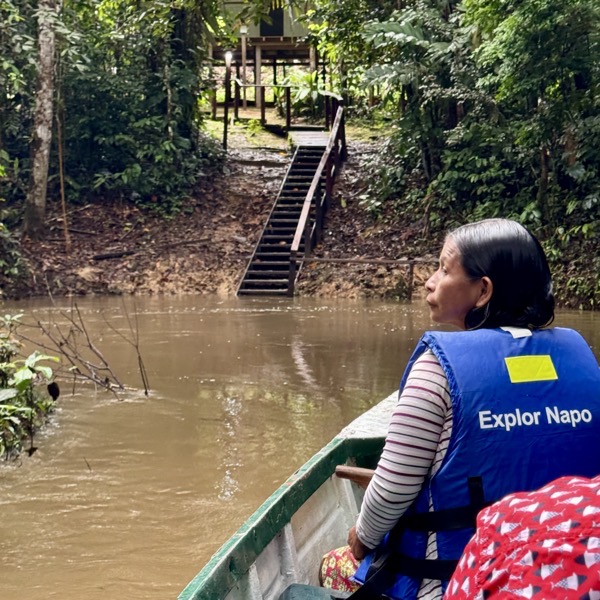
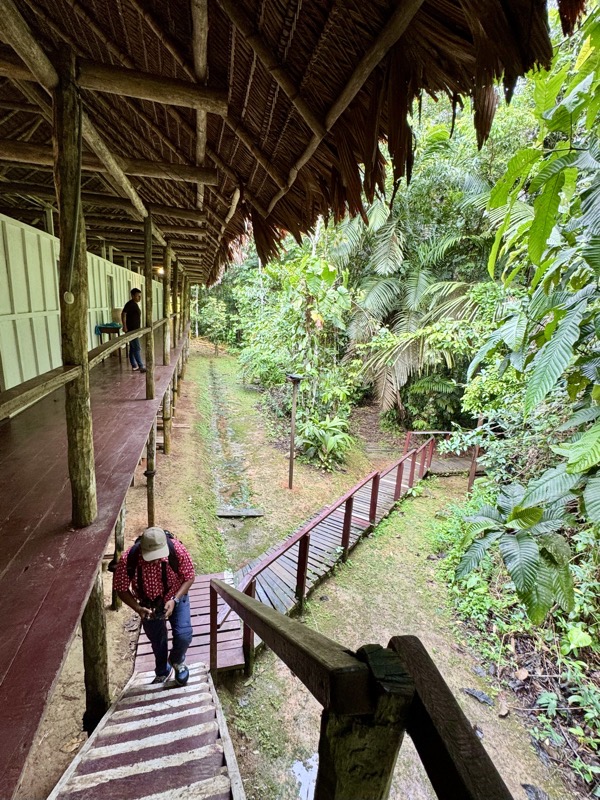
So, after journeying by boat along three rivers—the Amazon, the Napo, and a winding tributary—combined with a tuk-tuk ride and treks through lush, humid rainforest, we four intrepid explorers finally arrived at the start of our next great adventure: the incredible 1,750-foot-long canopy walkway, suspended high above the jungle floor.
We climbed the stairs to the first platform and, stepping onto the canopy walkway, entered an entirely different world—one suspended high above the forest floor, where the jungle stretched out beneath our feet and the treetops rose around us like towering green sentinels. The walkway itself was a series of narrow, gently swaying suspension bridges, strung between sturdy metal towers and anchored to massive rainforest trees. Each step caused the wooden planks to creak and shift slightly underfoot, while the mesh sides offered just enough reassurance as we moved forward, balancing between awe and caution.
—— The Awesome Rainforest Canopy Walk ——
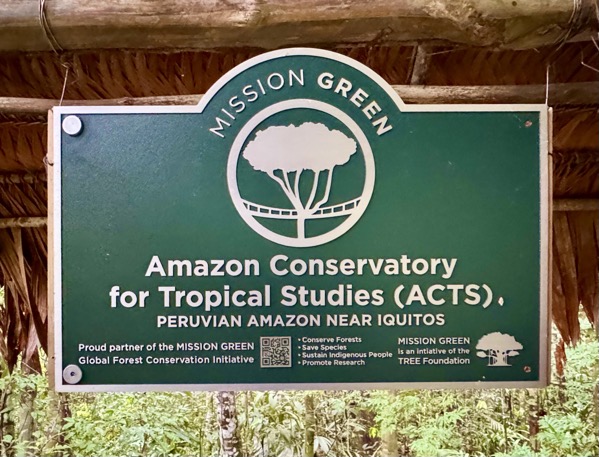
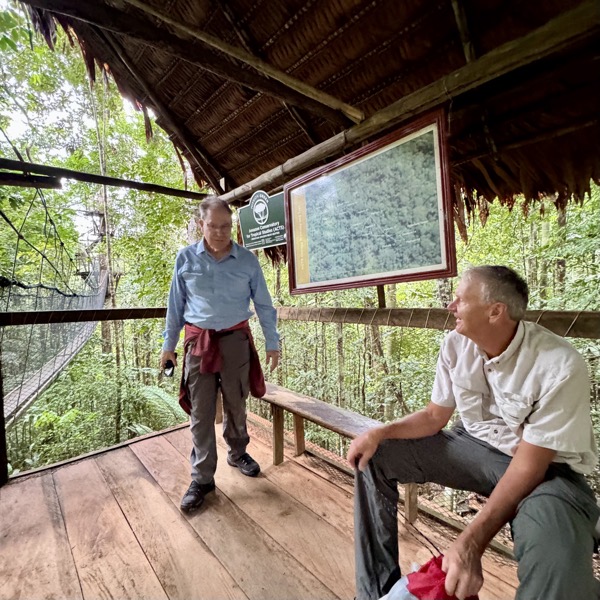
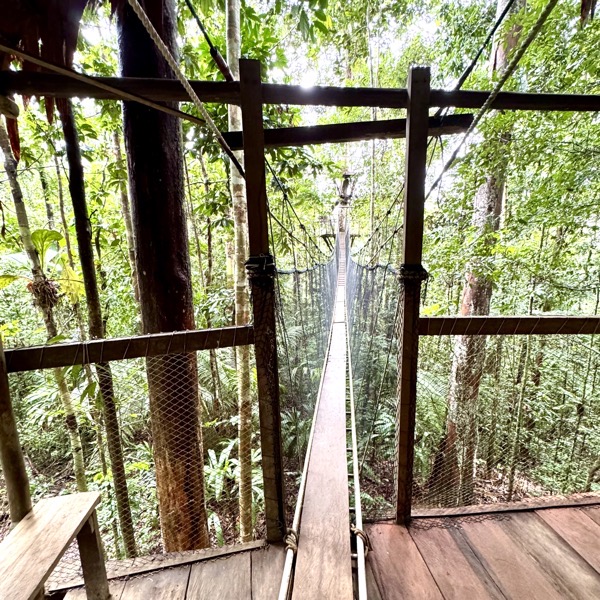
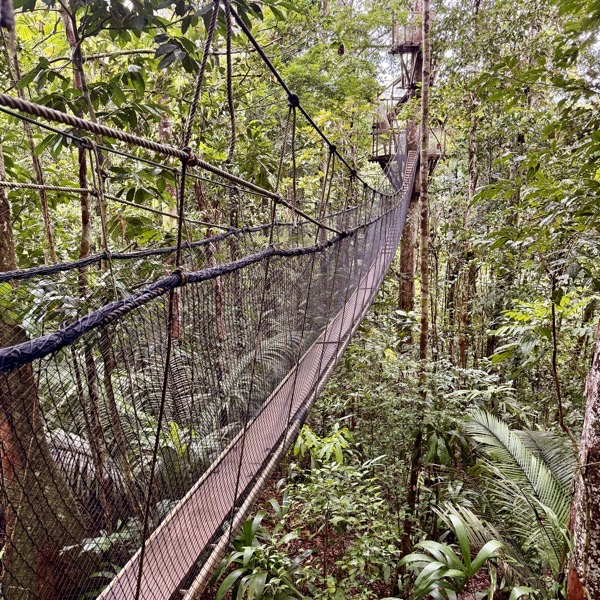
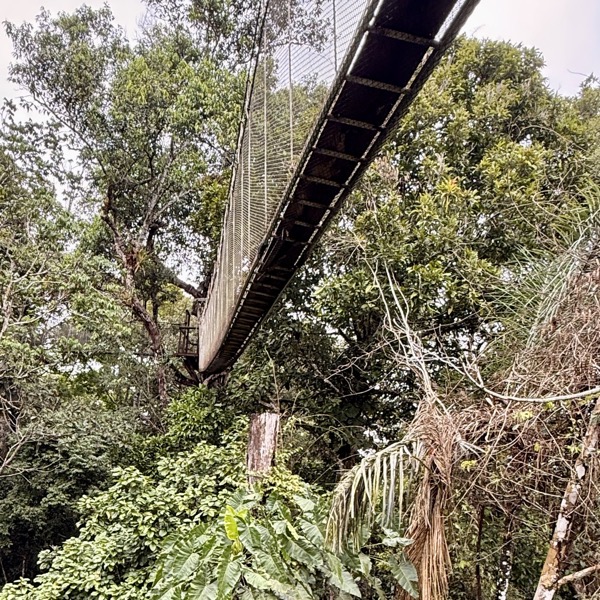
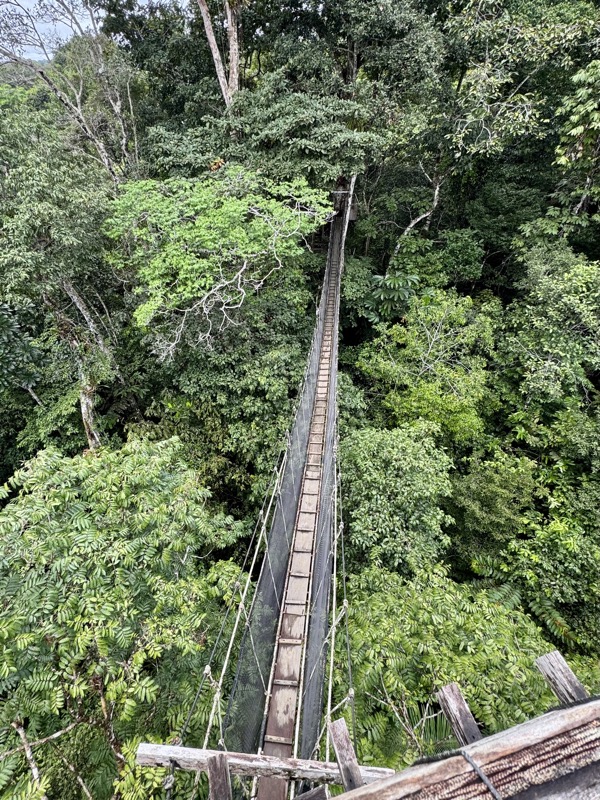
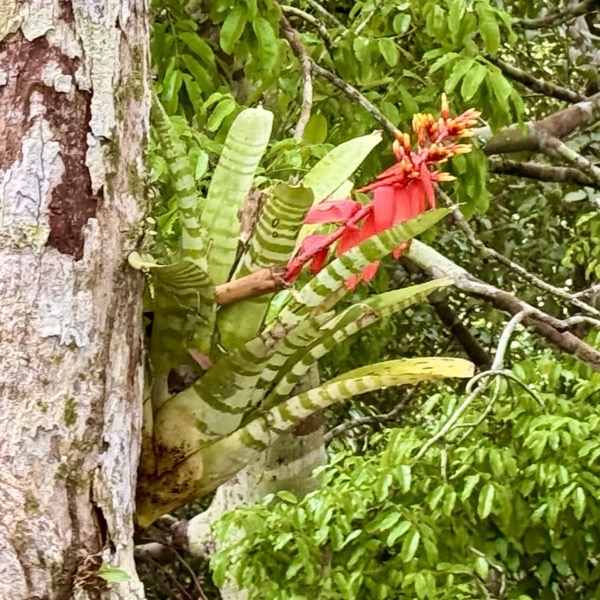
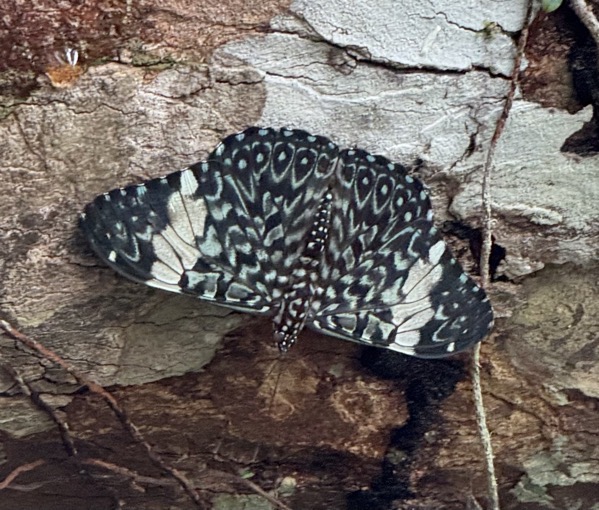
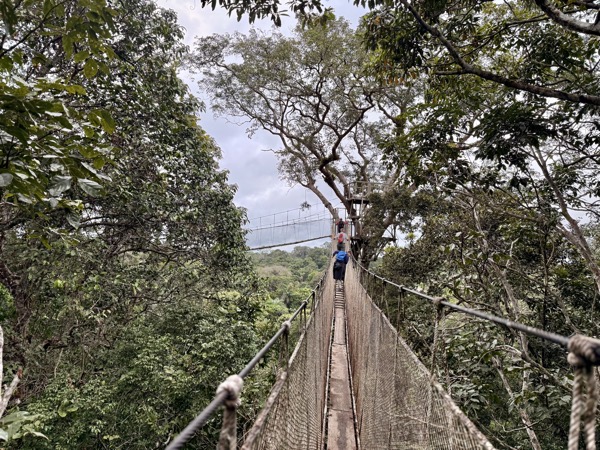
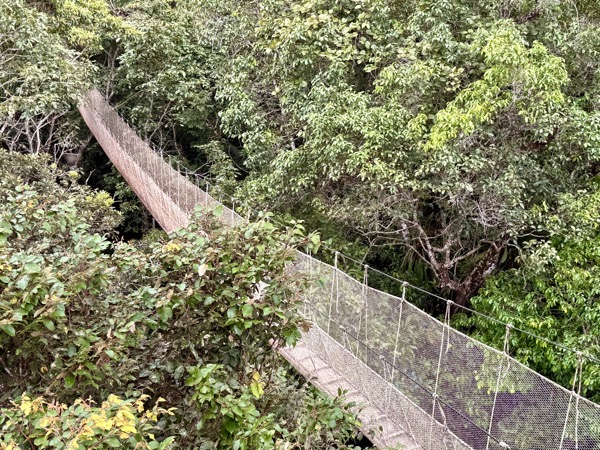
We made our way slowly, swaying from platform to platform, until we reached the sixth and tallest tower. After climbing its stairs, we found ourselves standing 115 feet above the forest floor. From this lofty perch, we paused for quite some time, immersed in the astonishing panorama of the jungle canopy unfurling in every direction. The air was alive with birdsong, and German, along with Jane’s Merlin app, helped us identify species by sound. With binoculars—which everyone but me had thoughtfully packed—we were able to spot flashes of color and motion among the leaves, catching glimpses of various avian species.
—— Tower 6, 115 feet above Ground Level ——
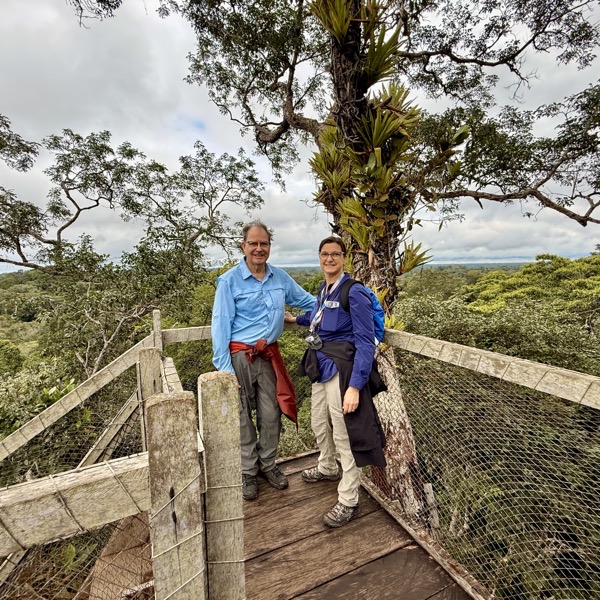
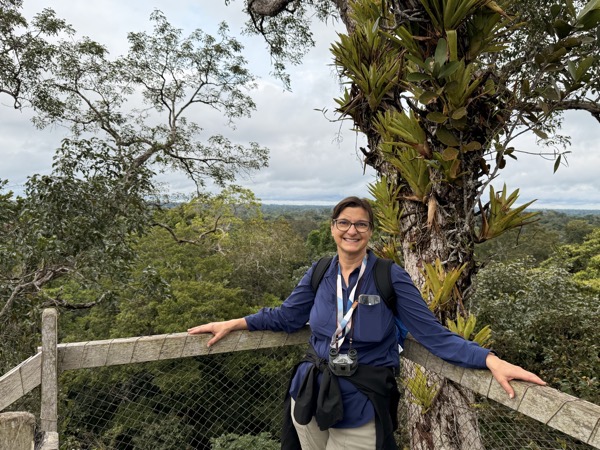
Eventually, we began our descent, moving slowly and stopping often for more in-depth observation. At one point, German played a recording of bird calls (which, amusingly, ended with a horse’s neigh). Surprisingly, the calls worked—enticing a group of birds close enough for us to see them clearly through binoculars.
—— Return Walk ——
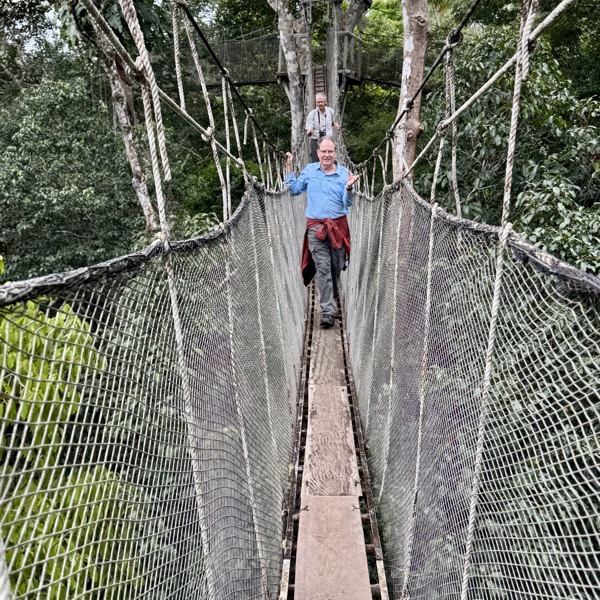
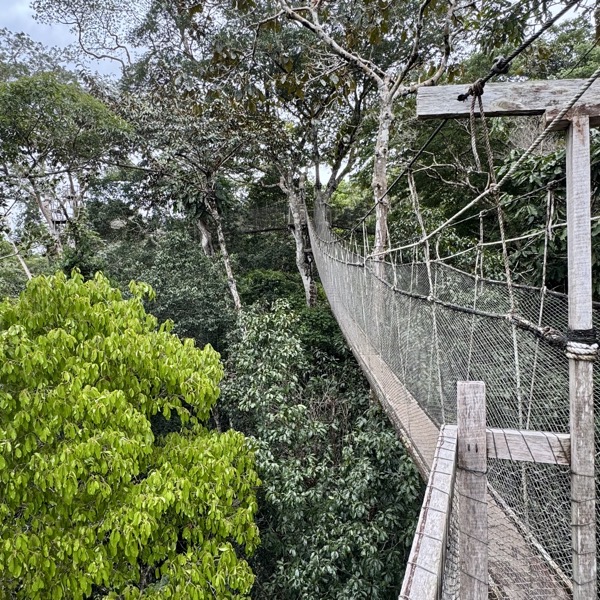
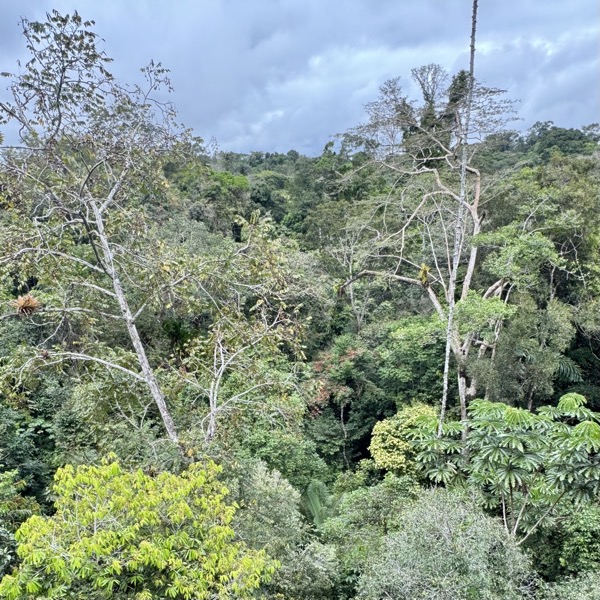
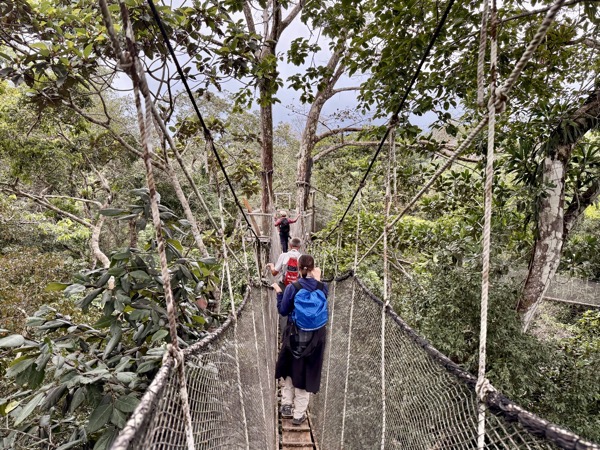
Walking among the treetops was both humbling and exhilarating, offering a rare and unforgettable perspective that few are privileged to experience.
When we returned to the starting tower, we found Katharin waiting for us, seated with palm leaves and a small bundle of supplies to demonstrate how to weave traditional Amazonian thatch—the same type used to roof buildings like the ExplorNapo Lodge. We were mesmerized as she expertly worked the leaves into an intricate, overlapping pattern that can withstand the heavy Amazon rains for 5–7 years.
—— Katharin demonstrating Thatch Construction ——
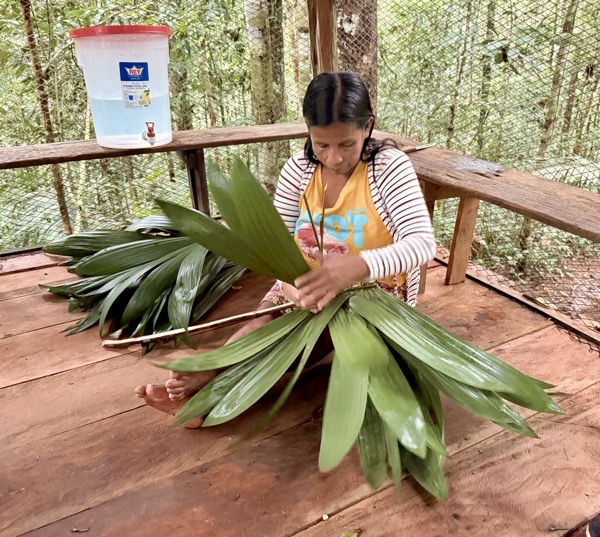
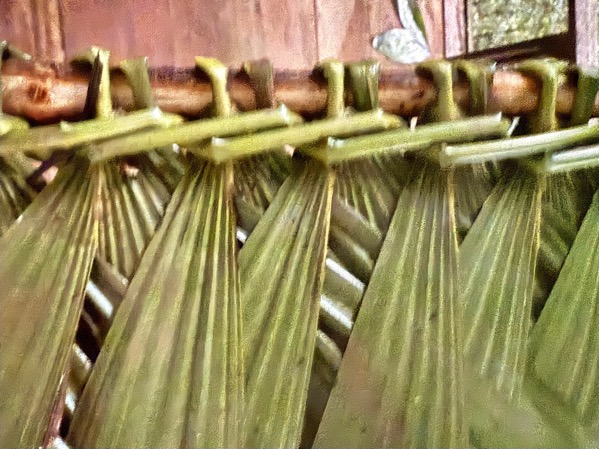
As she worked, the sky began to darken, and a rainstorm rolled in. So, Katharin abruptly packed up her materials, and we all hurriedly pulled on rain gear before beginning our descent from the canopy. Fortunately, the thick forest canopy offered some protection, and though damp, we weren’t completely soaked by the time we reached shelter after the 20-minute hike.
After a brief stop at the ACTS facility, we descended to the dock along the tributary, boarded the narrow boat, and retraced our route back to the ExplorNapo Lodge, where a well-earned lunch awaited us.
—— Departing ACTS ——
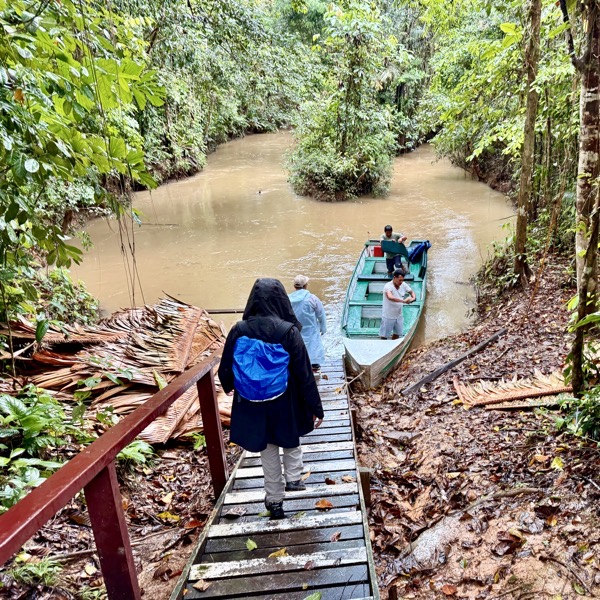
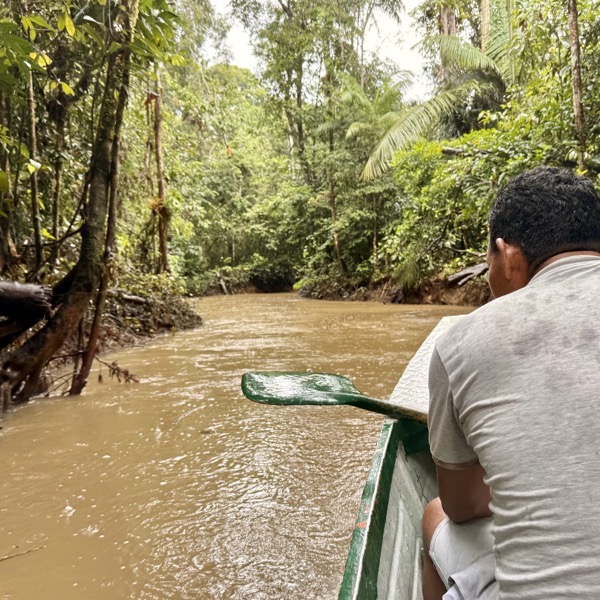
Following the meal, a young man gave an engaging presentation on a camera trap program used to inventory wildlife in the region. He shared a series of remarkable images captured by the cameras, revealing the diversity of animal species living in the surrounding rainforest.
—— Presentation on a Regional Camera Trap Survey ——
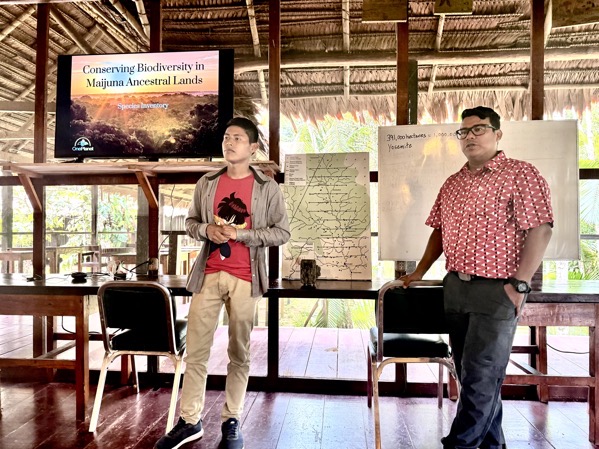
Next, we were treated to a fascinating and personalized talk by an Indigenous man and his son, who explained their work raising stingless bees and producing medicinal honey. They demonstrated the unique properties of the honey and its traditional uses—and Jane purchased a small dropper bottle of one of their products to take home.
—— Presentation about Stingless Bee Products ——
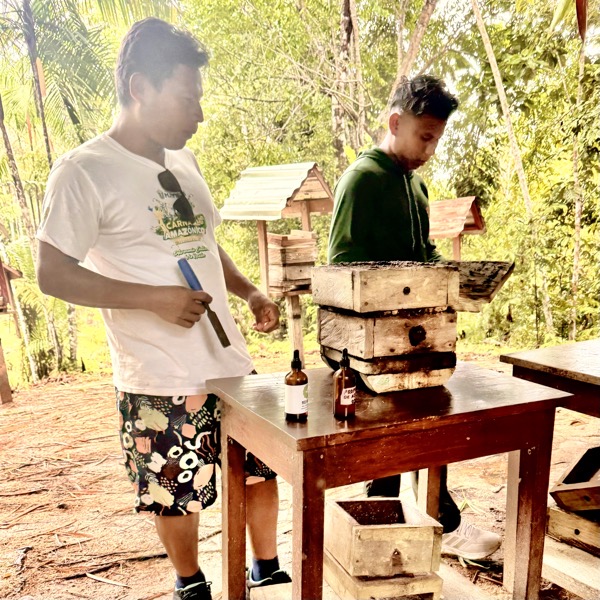
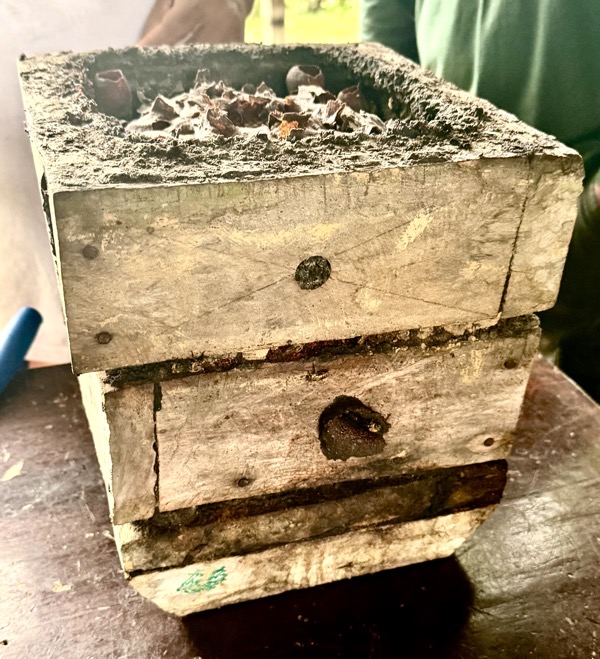
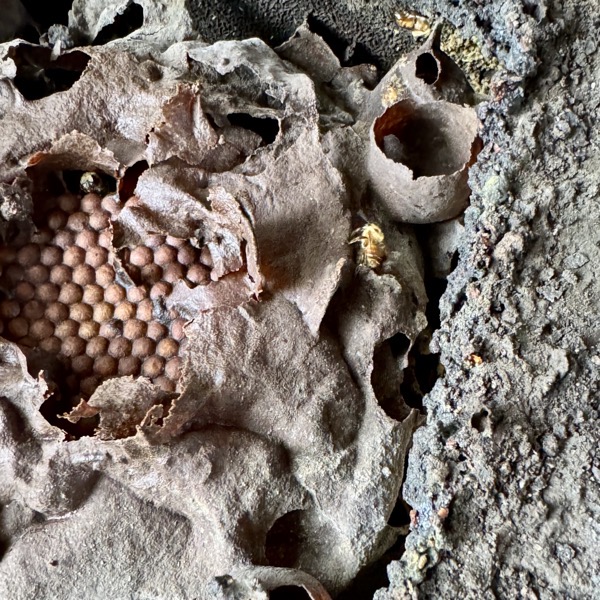
Then it was time to begin the return journey: a 50-minute boat ride back up the Napo River, followed by another tuk-tuk ride from Mazán to Indiana, and finally, a 15-minute speedboat trip along the Amazon River to Ceiba Tops.
Back at the lodge, we had some time to relax, but instead decided to take a refreshing dip in the pool — we had it all to ourselves. Afterward, we showered and headed to the bar for a drink.
—— Ceiba Tops Pool and Bar ——
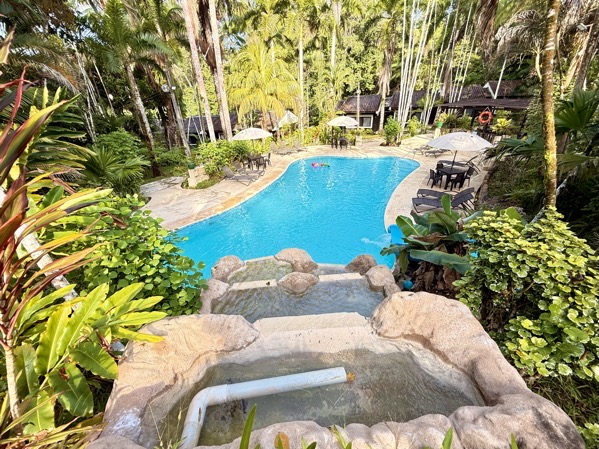
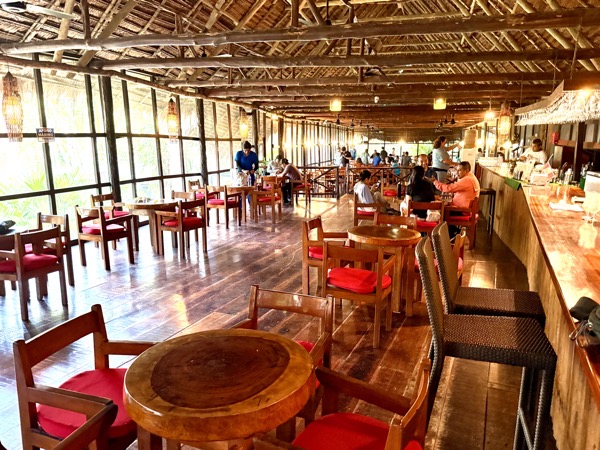
At 6:30 p.m., we met with German, who, armed with a large spotlight, led us on an after-dark hike through the jungle. Along the way, we spotted an array of nocturnal wildlife, including a resident pink-footed tarantula, an owl, a large millipede, a stickbug, toads, frogs, turtles, moths, fish, electric eels, and even the glowing red eyes of two Peruvian caimans (crocodilians). All of this was set against a backdrop of the jungle’s incredible nighttime symphony of sounds — a true cacophony of creature calls.
—— Nocturnal Rainforest Critters ——
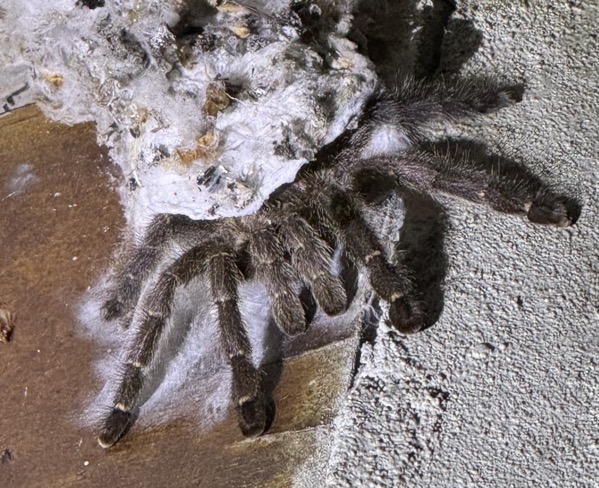
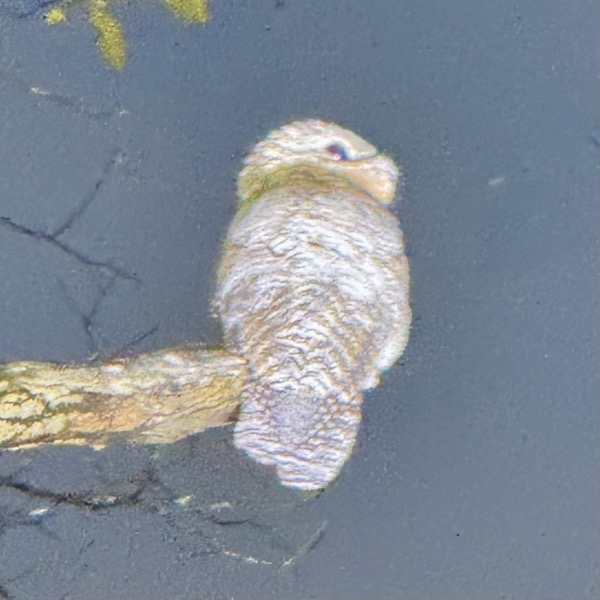
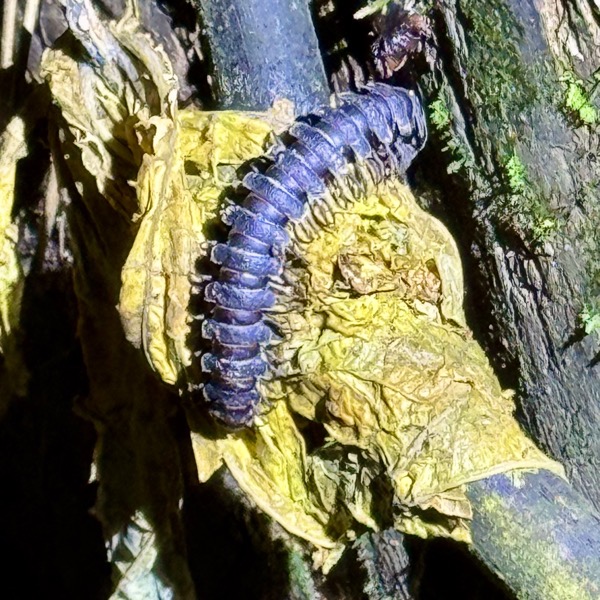
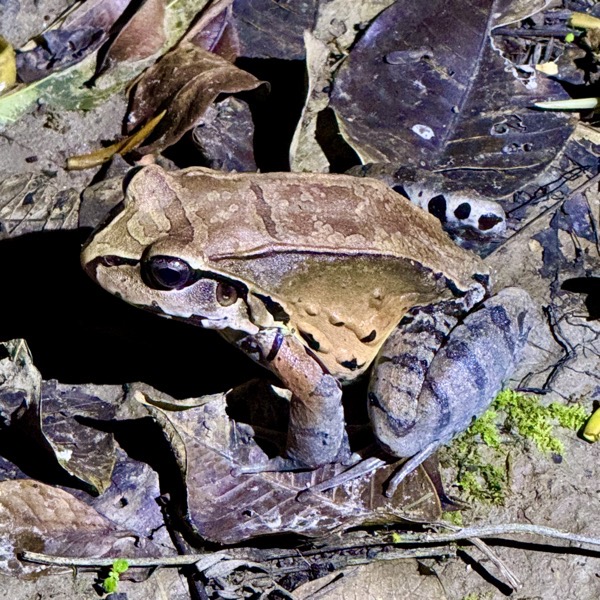
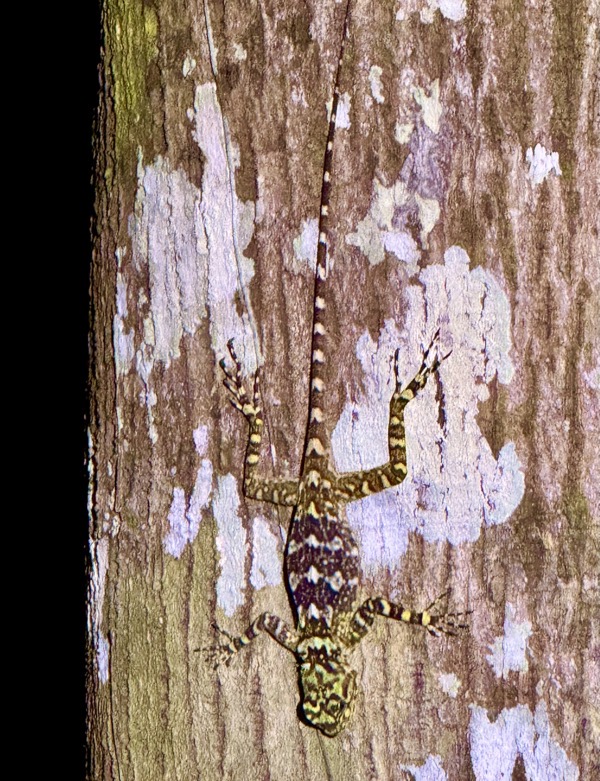
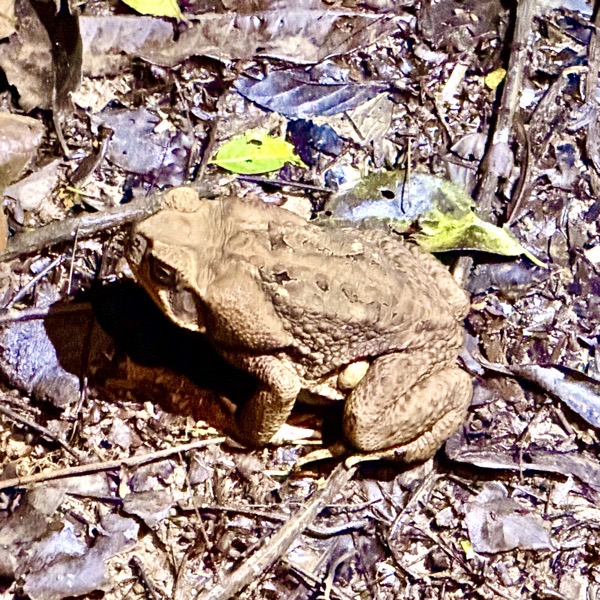
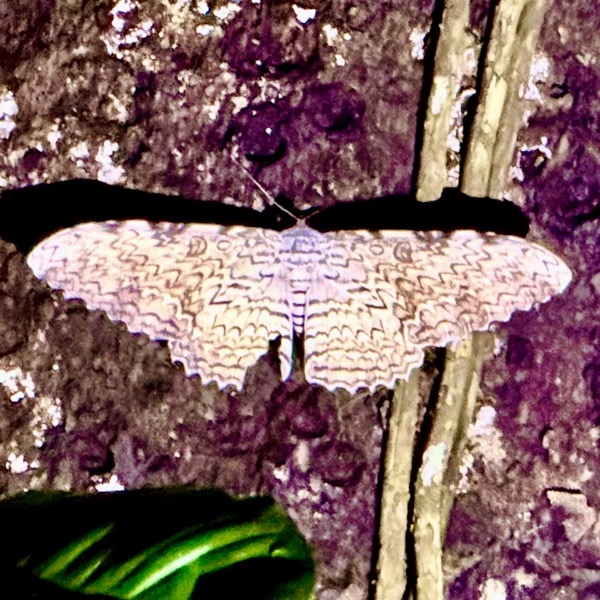
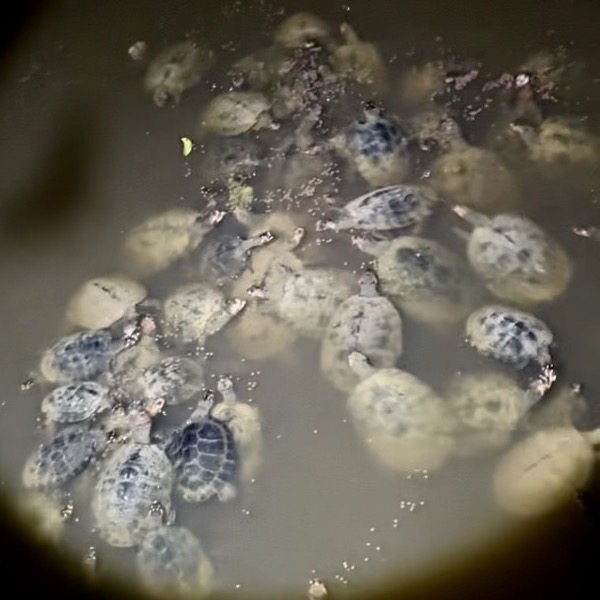
Following the hike, we ate another delicious buffet dinner. And then, finally, after a long and unforgettable day, we made our way back to our cabin and collapsed into bed.
Wow! Just wow! Did you put on bug repellant for your trips into the rainforest?
That is so interesting. Those were very long suspension bridges. It must ave been scary to navigate them. What an amazing experience!!